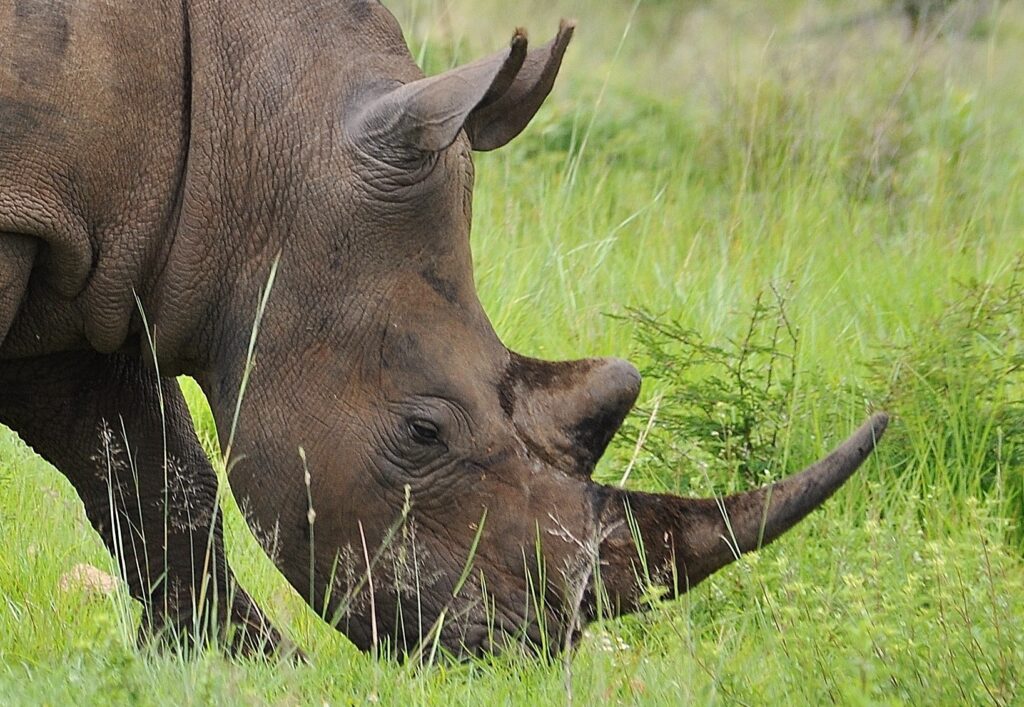
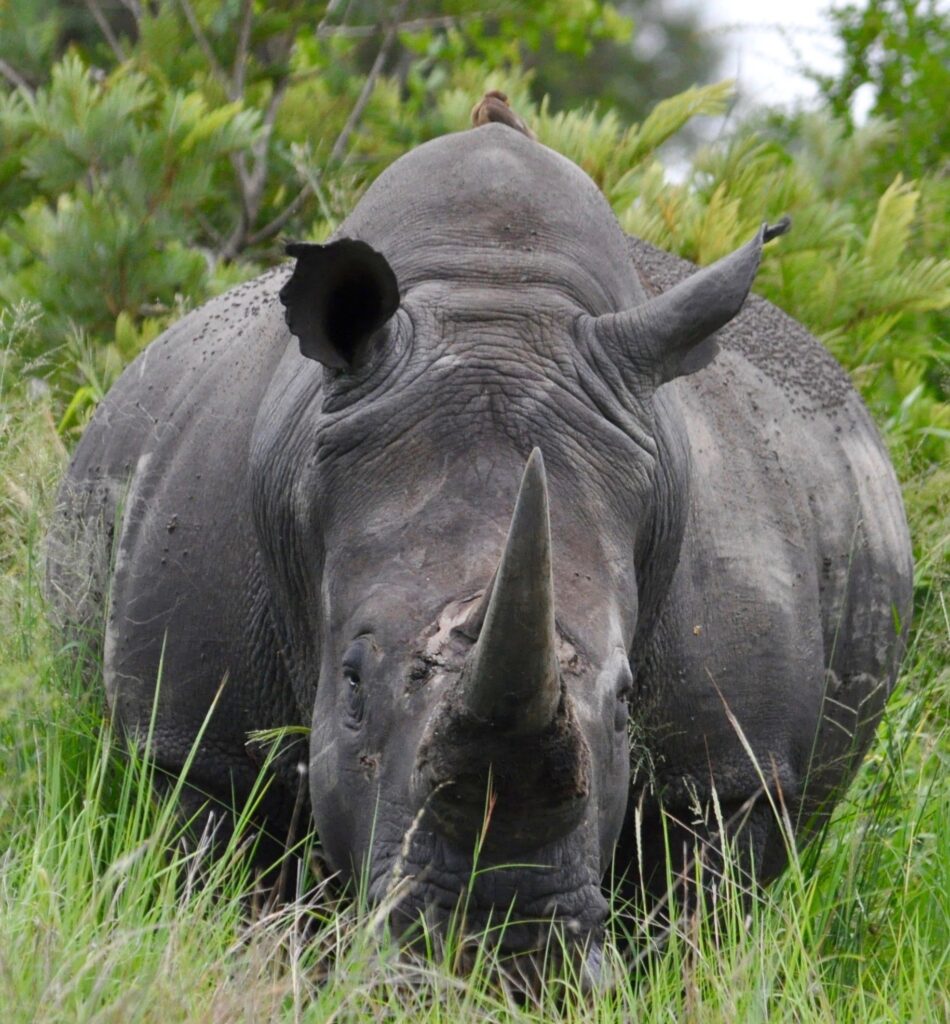
-the name rhinoceros means ‘nose horn’ and is often shortened to rhino.
In my language Norwegian it is called NESHORN – and directly translated to English is in fact “nosehorn”
Photo from KNP Jan 2011
At the time of writing – it is actually World Rhino Day – 22 of September ! The day to focus on protecting the rhinos – and support rhino conservation. “Five Rhino Species Forever”
The 5 rhino species that exist are: Two African – black and white rhinos – and three Asian – greater one-horned, Sumatran and Javan rhinos.
Three of these (black, Sumatran and Javan) are listed as ‘critically endangered’ by IUCN – there are thought to be fewer than 70 Javan and 100 Sumatran rhinos left in the wild, meaning their populations are truly under threat of extinction.
TYPE: Mammals
DIET: Herbivores

Sumatran rhino
(Dicerorhinus sumatrensis)
Weight :500 – 960 kg.
Population<80
Javan rhino
(Rhinoceros sondaicus)
Weight: 900 – 2,300 kg.
Population: 72
Greater one-horned rhino
(Rhinoceros unicornis)
Weight:1,800 – 2,500 kg.
Population: 3,588
Black rhino (Diceros bicornis)
Weight: 900 – 1,350 kg.
Population:5,366 – 5,627
White Rhino
(Ceratotherium simum)
Weight: 1,800 – 2,500 kg.
Pop: 17,212 – 18,915
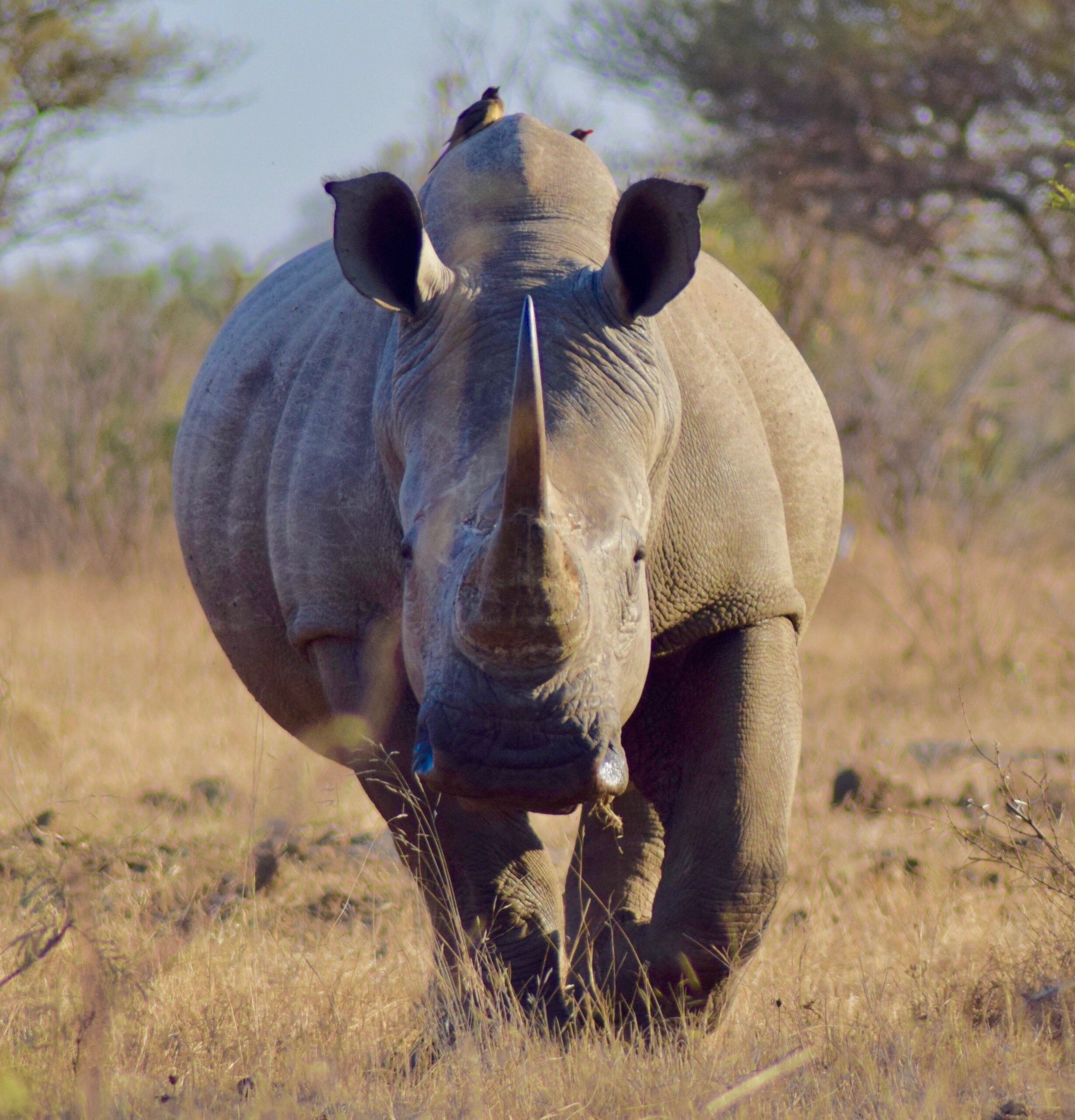
So the sumatran rhinos are the smallest, and white rhinos are the largest.
White rhinos are infact – the second largest land mammal in the world!
Only elephants are bigger than white rhinos.
The white rhino has also the largest population and are the most common rhino in Africa.
White Rhino – both photos taken in the Kruger National Park, July 2015.
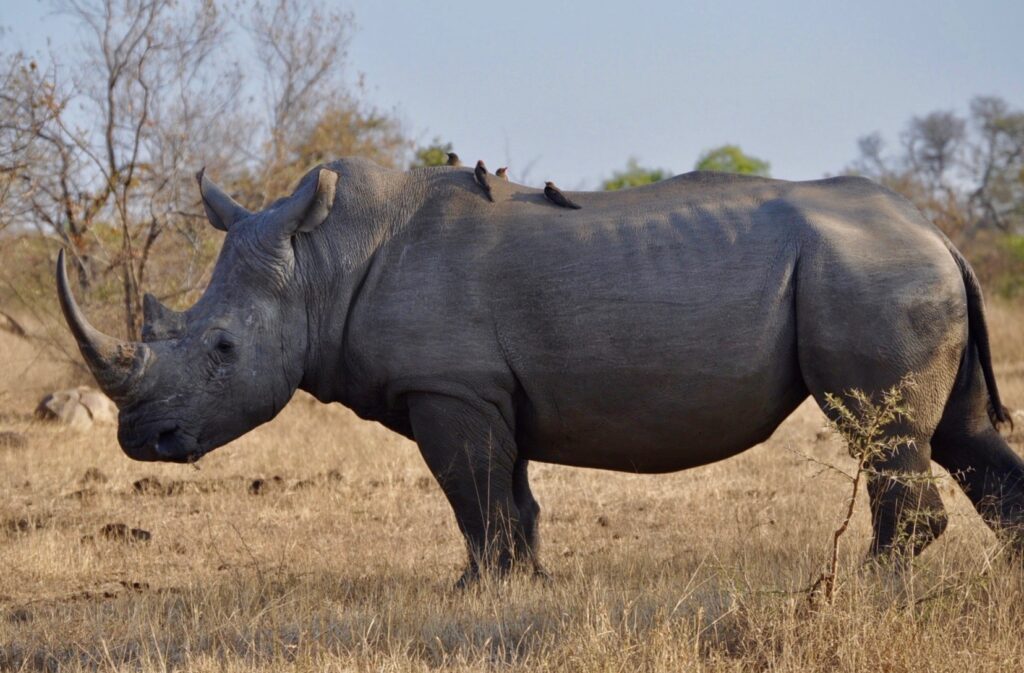
I have seen white rhino ( southern) many times in several national parks and game reserves in South Africa. Black rhino – only at few occasions in the Kruger National Park.
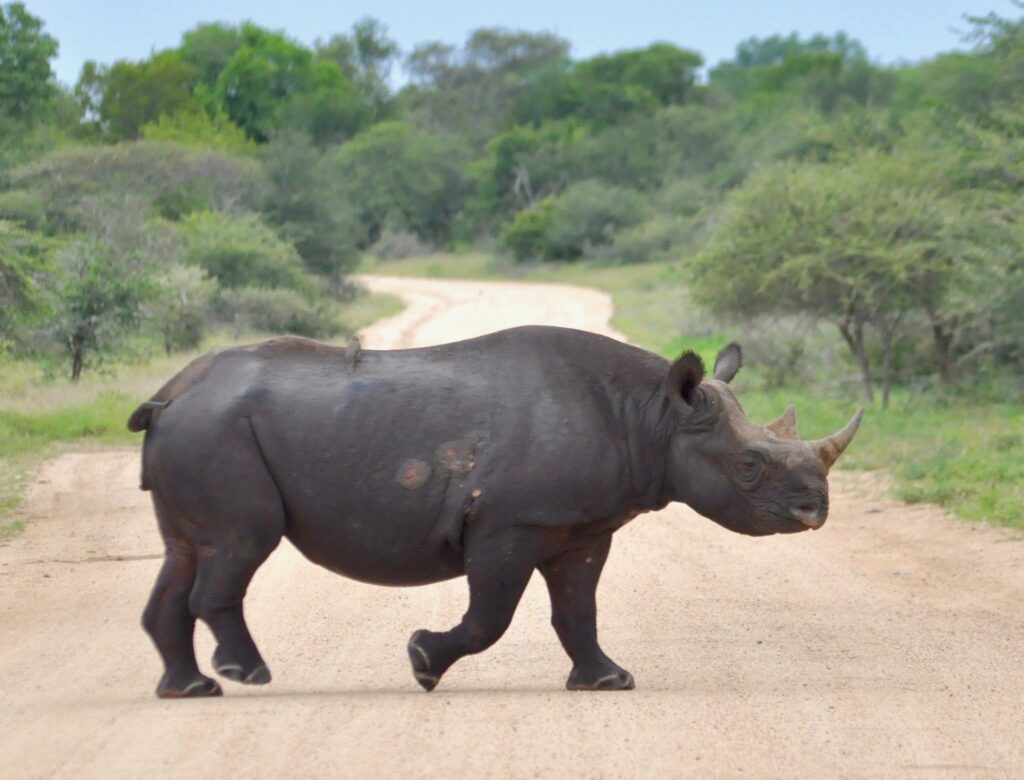
One of the Black rhino – I met in the Kruger National Park.
The black rhino is smaller than the white rhino and can also be distinguished by its pointed upper lip.
Other facts:
- Rhino horn is made up of keratin – the same protein which forms the basis of our hair and nails.
- The black and white rhinos are both actually grey. The names are misleading. The white rhino is said to have gotten its name from the Afrikaans word for wide (‘wyd’), referring to its wide, square lip (in contrast, black rhinos have a pointy upper lip). Early English explorers mistook this word for ‘white’ and consequently named this species ‘white’ rhino, and the other ‘black’ rhino to differentiate.
- Females tend to be more sociable than the more solitary, territorial males.
- A group of rhinos is known as a herd, or a crash!
- Rhinos’ eyesight isn’t great – they’re unable to see a motionless person at a distance of 30m – they mainly rely on their strong sense of smell.
- Rhinos make an array of funny noises when they’re communicating.
- Running at 30-40 miles per hour.
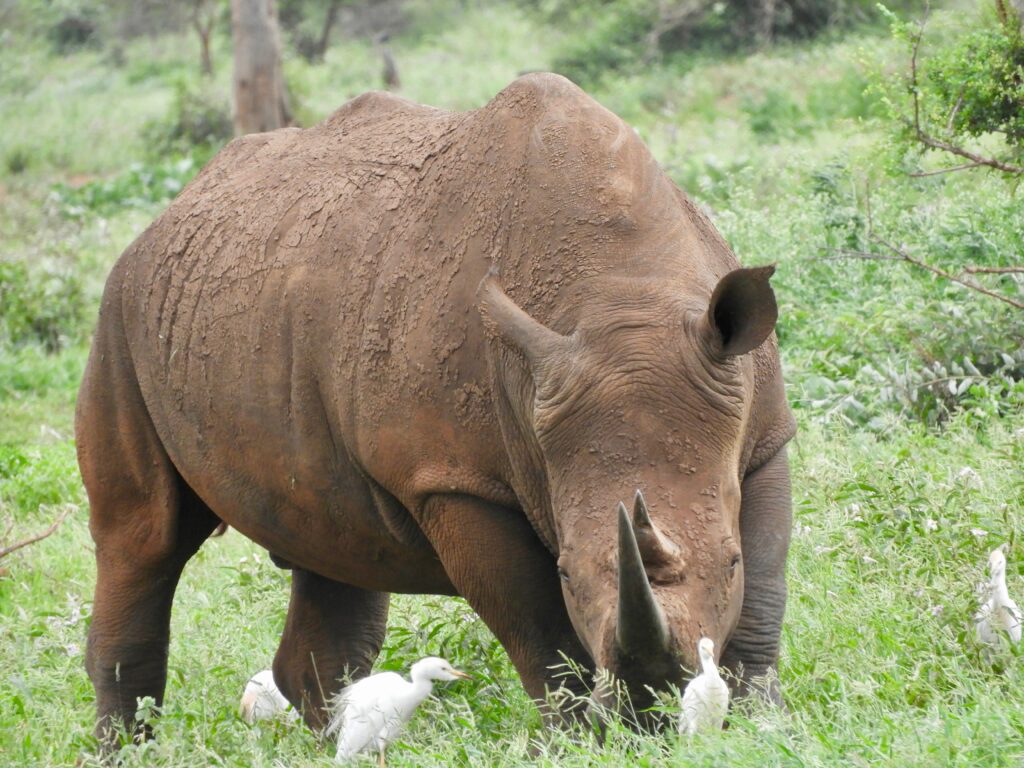
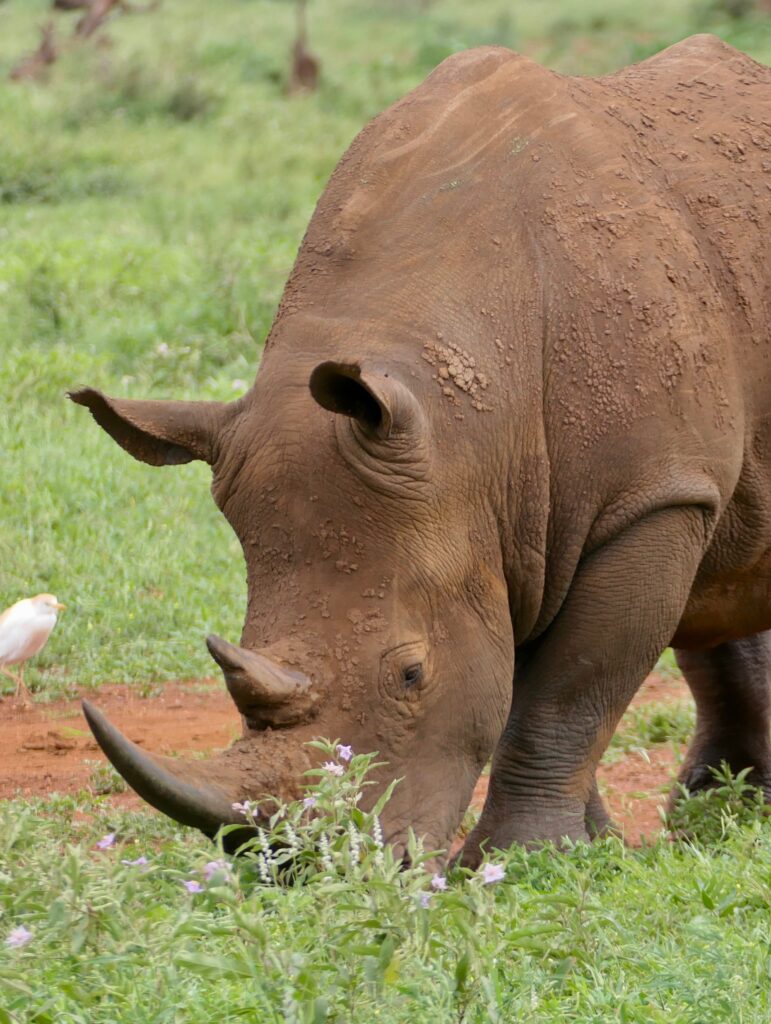
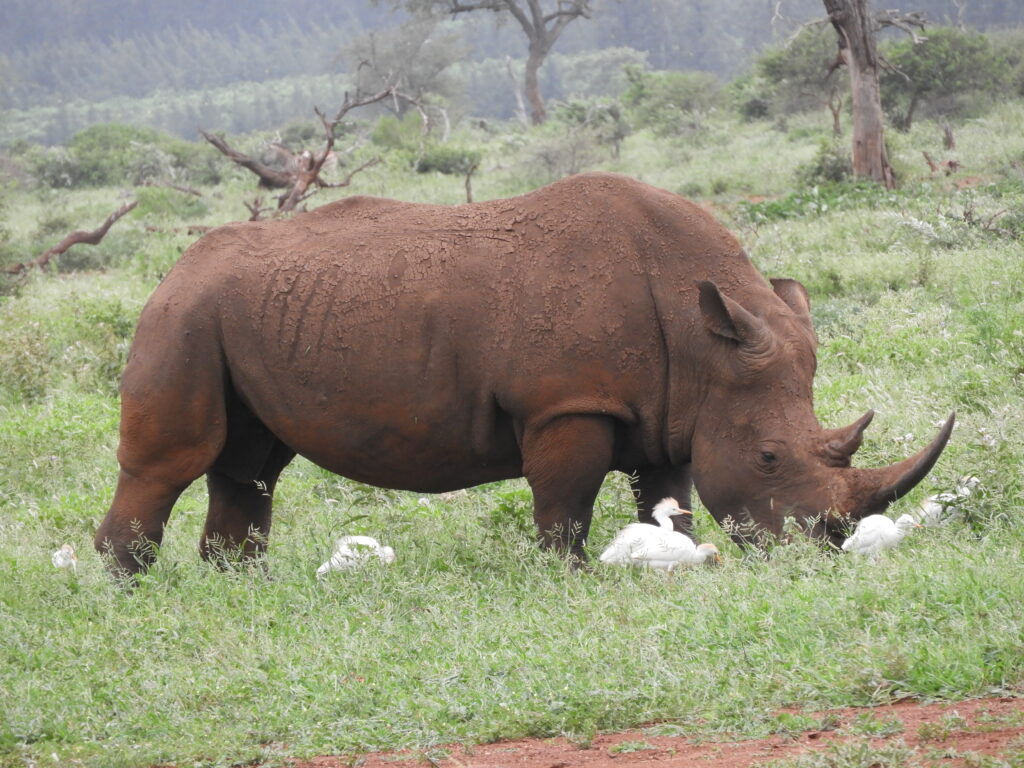
White Rhino – KNP , December. 2019
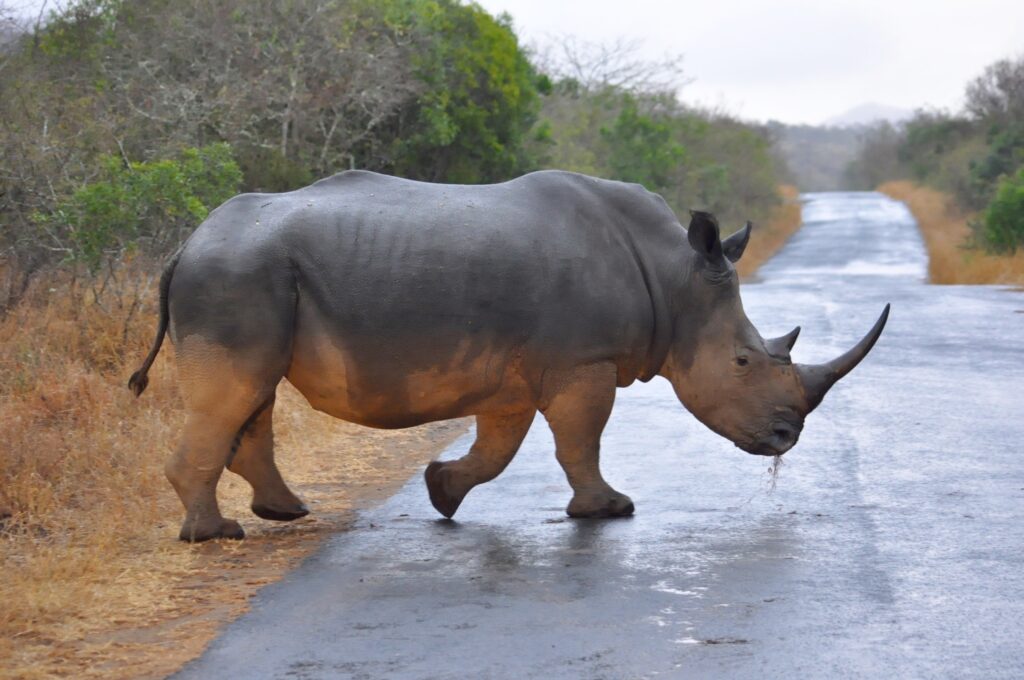
The game reserve we have seen most rhinos – is Hluhluwe Game Reserve.
Use the link to see our memorable rhino moments in this reserve.
Other special moments with rhinos:
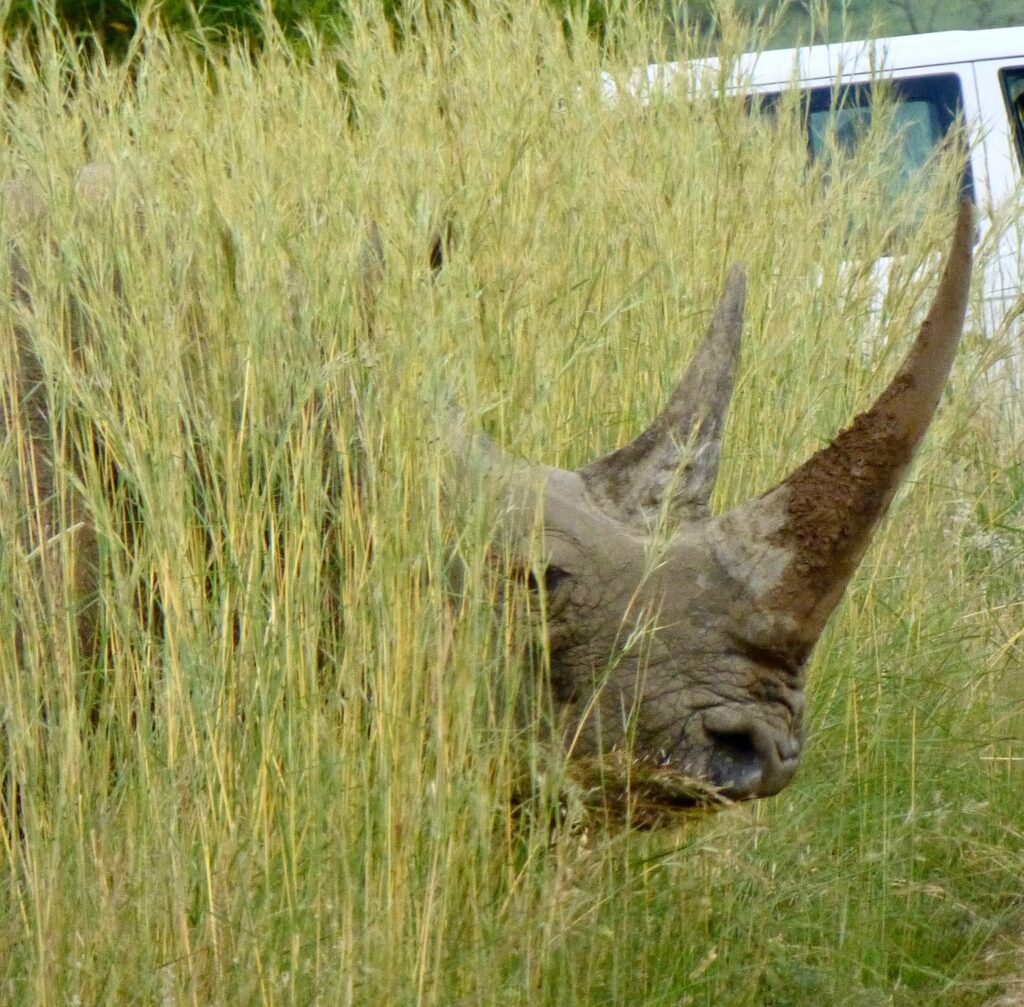
Meeting with rhinos in Pilanesberg National Park

